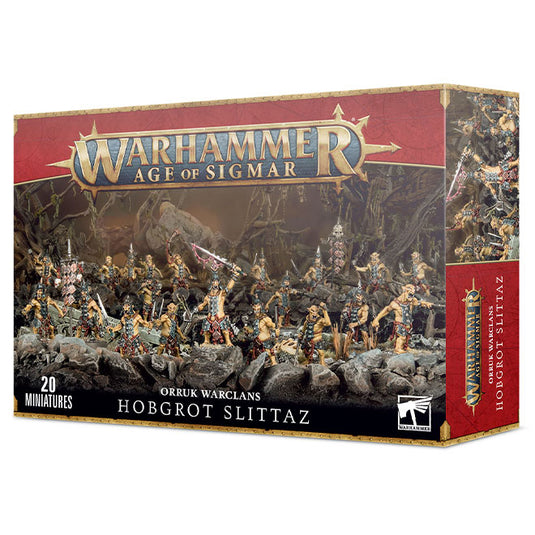Warhammer Age of Sigmar - Orruk Warclans - Hobgrot Slittaz



We will send you a notification as soon as this product is available again.
Hobgrots are devious and malicious allies for the Kruleboyz. In Orruk society they act as barterers, trading between the greenskins and Hashut-worshipping duardin, letting both sides believe they are getting one up over the other.
In battle, these grots are tougher and brainer than their diminutive cousins, and surprisingly adept in military tactics. Exceptionally dextrous, armed with razor-sharp slitta-knives and sulphuric scrap-grenades, they are a proficient skirmish unit – when they stop stabbing each other in the back for long enough to fight a battle.
This push-fit kit comprises 98 components, with which allows you to build 20 Hobgrots armed with slittaz, as well as grenades and armour they have acquired from duardin traders. There are multiple build options within the kit, with a variety of head options available.
With this kit, there are options to build two units of 10 Hobgrots – each with a choice of boss, a choice of two different Scrap Totem Bearers, and a choice of two different Noise-makers – or a single unit of 20 Hobgrots. This kit comes supplied with 20x 25mm Citadel Round bases. These miniatures are supplied unpainted and require assembly – we recommend using Citadel Plastic Glue and Citadel paints.
What are miniatures used for in tabletop games?
How do I paint my miniatures?
What materials are miniatures typically made from?
How can I start collecting miniatures?
Where can I buy miniatures?
What are some tips for assembling miniatures?
Can miniatures be used in different games?
How should I store and transport my miniatures?
Are there any beginner-friendly miniature painting tutorials?
